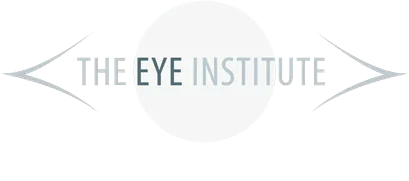Do your eyes hurt, burn or itch after a day at work? Poor lighting may be to blame for your symptoms. Many companies use inexpensive fluorescent lighting to light large areas because it’s a fairly inexpensive option. Unfortunately, your eyes pay the price.
What Kinds of Eye Problems Can Fluorescent Lighting Cause?
Exposure to harsh fluorescent lighting can cause eye strain and blurred vision. The longer you’re exposed to the light, the more likely you’ll experience the problem. Symptoms of eyestrain include sore, burning, watery or dry eyes. Double vision and increased sensitivity to light can also occur. At times, you may feel that it’s hard to keep your eyes open or concentrate on your work. Headaches are common, particularly if the fluorescent lights flicker. If you suffer from migraines, exposure to the lights may cause more frequent episodes.
Overhead fluorescent lights aren’t the only cause of the problem. Compact fluorescent lights (CFL), an energy efficient substitute for incandescent bulbs, can trigger the same symptoms. Researchers who published an article in the American Journal of Public Health noted that exposure to both traditional fluorescent lights and CFLs can increase your eye disease risk because fluorescent lights produce an artificial source of ultraviolet (UV) light. Frequent exposure to UV light can cause several eye diseases, including cataracts and age-related macular degeneration.
Those Baby Blue Are at Particular Risk
If you have blue or light-colored eyes, you may experience eyestrain and sensitivity problems more intensely than your friends with dark eyes. People who have darker eyes have more pigment in the layers of their eyes. Pigment helps protect the eyes from the effects of fluorescent light and UV light.
Dim Lighting Can Also Cause Problems
Working in a dimly lit environment can be just as uncomfortable as working under bright lights. Dim light can cause eyestrain and make your eyes feel tired quicker. Not surprisingly, productivity can suffer when there’s not enough light.
Preventing Eye Problems
Proper lighting can help you avoid eye problems. Adding lamps to dark areas is a good option. Using lamps instead of overhead fluorescent lighting will also be more comfortable if harsh lighting is a problem. Unfortunately, turning off the lights probably isn’t an option if you work in a cubicle farm, but these tips can make a day at the office more comfortable.
- Blink frequently to keep your eyes moist.
- Wear wraparound sunglasses or a visor if fluorescent lights bother your eyes.
- Use lubricating eye drops to prevent dry eye.
- Reduce glare from the sun by positioning your computer away from windows.
- Take regular breaks during the day.
- Use an anti-glare shield on your computer or install a computer hood if glare is a problem.
- Ask your eye doctor about glasses with a special anti-glare coating.
- Lower blinds and shades during the sunniest parts of the day.
- Ask your co-workers to join you in requesting healthier lighting choices.
Taking steps to protect your eyes at work can help you avoid eyestrain. If eyestrain is still a problem, we can help. Give us a call today and schedule an appointment.
In today’s digital age, many of us spend eight hours in front of screens at work and several more at home surfing the internet or texting. Looking at digital screens for hours can trigger computer vision syndrome, a condition that causes eyestrain, dry eye, blurred vision and headaches. Prevent computer vision syndrome by following these tips:
- Position your computer monitor so that you’re looking down at it. Lowering your monitor not only reduces eyestrain, but decrease neck and shoulder stiffness.
- Take a 20 second break at least every 20 minutes.
- Make sure your monitor isn’t too bright, as that may increase eyestrain. Your monitor shouldn’t be so bright that you can see the light from across the room.
- Wear computer glasses. Your optometrist can prescribe glasses that are ideal for working on the computer. The glasses feature an anti-glare coating and are often tinted to enhance contrast on the screen.
- Alternate wearing your contacts and glasses. Contacts can become dried out when you spend hours working on the computer.
- Place your copy stand under a lamp. Eyestrain is more likely to occur if you have to squint to see papers and files when you’re working on the computer.
Sources:
Photochemistry and Photobiology: Effects of Light-emitting Diode Radiations on Human Retinal Pigment Epithelial Cells In Vitro, 10/9/12
http://onlinelibrary.wiley.com/doi/10.1111/j.1751-1097.2012.01237.x/abstract
American Journal of Public Health:Eye Disease Resulting From Increased Use of Fluorescent Lighting as a Climate Change Mitigation Strategy, 12/11
https://www.ncbi.nlm.nih.gov/pmc/articles/PMC3222423/
American Academy of Ophthalmology: Fluorescent Lights and Vision Problems, 8/12/14
https://www.aao.org/eye-health/ask-ophthalmologist-q/fluorescent-lights-make-my-vision-cloudy
American Optometric Association: Computer Vision Syndrome
Duke Health: Myth or Fact: People with Light Eyes Are More Sensitive to Sunlight, 8/27/13
https://www.dukehealth.org/blog/myth-or-fact-people-light-eyes-are-more-sensitive-sunlight
All About Vision: Computer Eyestrain






